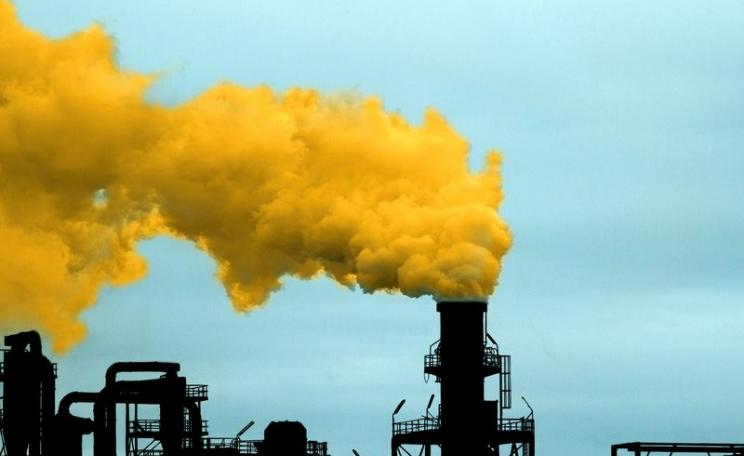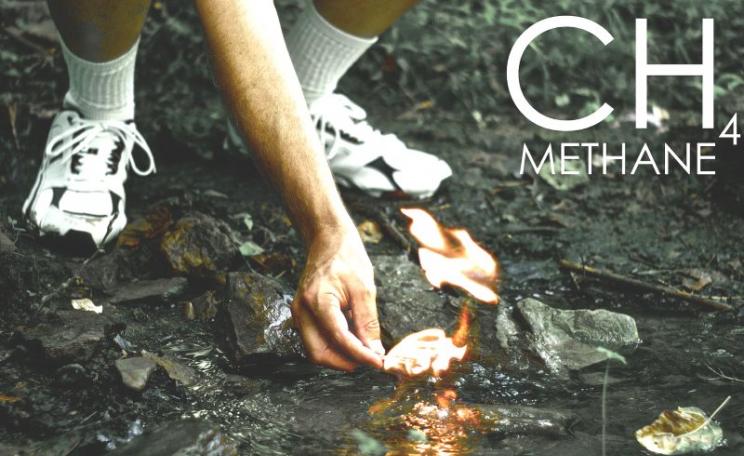What really annoys me is that, 20 years ago, the consequences of decisions made then were entirely foreseeable - and were made purely for the sake of money over the value of people's health.
I've been a professional 'environmental investigator' for over 22 years now. Over that time I've seen some awful offences against the environment. I've also witnessed some inspiring action from the individuals and communities affected.
After seeing so many outrageous cases it's easy to become desensitised to the more everyday environmental offences - even if they are, of themselves, dire to those involved.
But every now and again you come across something that jerks you back to stark reality - something that touches a raw nerve.
I spent the 1990s working as an 'eco-troubleshooter for hire' across Britain. For the last decade or so, tired of seeing the same problems coming around again and again, I've become more strategic - trying, proactively, to deal with issues before they become an offence to human health and environment. For example, I was apparently the first person touring the UK talking about fracking in 2009 / 2010.
I've seen all sorts of 'nastiness' - from the dodgy waste reclamation plants of the Black Country, to the chemical plants of Teeside, to the landfills of South Wales.
The point at which I decided to stop chasing tipper lorries, and instead proactively identify 'the next big issue', was after fighting Newcastle City Council in 1999/2000.
They had, as a method of 'recycling', dumped highly toxic incinerator ash on public parks and allotments across Newcastle - only for them to get a slap on the wrist in the court and, politically, to brush the matter under the carpet.
A case from the 'book of horrors'
1991-2003 is a time in my career which I look back upon with both fond and troubling memories. And a few weeks ago it came back to haunt me with a vengeance. After speaking about fracking in Guildford I met a couple whose case was right out of my old 'book of horrors' from the 1990s.
During February of this year the news was dominated by the flooding along the Thames Valley. Amidst the general mayhem there was one tragedy which has received little public attention.
In the early hours of 8th February 2014, Kye Gbangbola, his seven year old son Zane, and Zane's mother Nicole were all taken ill at their home in Thameside, Surrey. An ambulance was called and they were taken to hospital. Both Kye and Zane had suffered cardiac arrest. Zane died later in hospital. Kye remains paralysed from the waist down.
Kye and Nicole came to my talk in Guildford and told me of their campaign to find the truth of what happened that day. Surrey Fire and Rescue Service attended and found hydrogen cyanide. Medical tests also showed the presence of cyanide in the family's blood.
What really annoys me is that, 20 years ago, the consequences of decisions made then were entirely foreseeable - and were made purely for the sake of money over the value of people's health.
Ten months later the case has not been resolved: no date for an inquest; no death certificate; no resolution to the family's plight.
What is the possible source of cyanide from flooding?
Just to the north of their home was a former gravel pit which, some years ago, had been used as a waste dump. Before waste licensing came in a the end of the 1970s, waste dumping was pretty much uncontrolled. Former gravel and brick pits around the periphery of London were used extensively to get rid of the capital's waste.
And the source of the waste? No one knows. If, for example, the site had been filled with innocently identified 'construction waste', and if that material had come from a former gasworks in London or elsewhere, it could contain high levels of cyanide.
These things happened in the 1970s and 1980s. For example, in 1992 I discovered the the UK Atomic Energy Authority's Harwell Laboratory, Britain's premier nuclear research agency, had for years been secretly dumping waste chemical flasks and radioactive waste transport containers in a gravel pit on the edge of an Oxfordshire village.
In April 2014 Surrey County Council, the waste disposal authority for the area, denied that the site had been landfilled. If you go to the Environment Agency's web site, you can see that the site is classed as an 'historic landfill' - that is, pre-dating the controls brought in during the late 1970s.
As flood-waters rose in February, the landfilled material is presumed to have become saturated. As the result of either chemical reactions, or the displacement of toxic gases, or both, the groundwater which filled the cellar is presumed to have carried the toxic gas into the house, overcoming the family.
A trip down eco-memory lane
What I've found so troubling about this case is that, for twenty years, this has been a tragedy waiting to happen. To explain why, I need you to take a trip down eco-memory lane.
When I started work professionally in 1992, the first thing I did was to write a series of reports on the issue of contaminated land. During my 'voluntary period' (1984-1991) I'd come across the issue a number of times.
From closed landfill sites, to old gasworks, it was a serious problem - and one which I believed could form the basis of a viable business as a full-time 'environmental investigator'.
The Department of the Environments' (DoE) Interdepartmental Committee on the Redevelopment of Contaminated Land (ICRCL) had produced a number of documents in the early 1980's setting out the best practice for the redeveloping contaminated land.
In 1985 the Royal Commission on Environmental Pollution's Eleventh Report highlighted the problems too. This led to research being commissioned, and eventually the issuing of a DoE / Welsh Office circular explaining the procedures and best practice in the redevelopment of contaminated land. The ICRCL also revised some of their previous notes to reflect this.
In 1989 the Government decided to put all this new research and best practice into a formal, legally enforcible regulatory framework; which was inserted into the new Environmental Protection Bill , eventually becoming Part II of the Environmental Protection Act 1990.
Then the development industry went absolutely berserk!
Shortly after the new Act was approved, developers and landowners, fearful that their assets would be effectively worthless if they had to clean up historic contamination, brought brickbats to bear on politicians and regulators. What particularly stirred their wrath were two specific sections of the new Act:
Section 61, which required local waste regulation authorities to map all the former landfill sites in their area. The rationale was that what is the value of bringing new regulations to control the hazard from current and new landfill sites if you didn't police the condition of the old ones too. Specifically paragraph 1 stated,
"it shall be the duty of every waste regulation authority to cause its area to be inspected from time to time to detect whether any land is in such a condition, by reason of the relevant matters affecting the land, that it may cause pollution of the environment or harm to human health."
Section 143 was similar, but it extended the need to survey and evaluate land to all potentially "contaminative uses of land", and created a,
"duty of a local authority, as respects land in its area subject to contamination, to maintain, in accordance with the regulations, a register in the prescribed form and containing the prescribed particulars."
The fear expressed by many property developers was that large areas of land would be 'blighted'. The land would be worthless because of the perceived risk in the mind of the public, and because of the large costs of decontamination before any new developments could be built.
That view ignores the potential hazards of development - and arguably the greater cost to public health and the NHS. I'd carried out some research on behalf of Friends of the Earth in Oxfordshire, Kent and Lancashire, and there were a large number of sites which could cause problems to the environment and human health if badly redeveloped.
The risk was not from the land as it was - it was the impact on workers and the public if the substances locked-up in the ground were disturbed, dug up or moved.
In May 1991, following a public consultation, regulations were drafted to implement the new system - to be commenced in April 1992. These were abandoned shortly before this date due to pressure from property developers.
To address the developer's concerns, following a second consultation period, the regulations were the redrafted - the new guidelines only covering 15% of the land area which the original regulations would have. Despite this, the Department of the Environment still received objections from major developers and landowners.
The Government caves in to pressure
On 24th March 1993 the Government abandoned plans to implement sections 143 and 61 of the Act, and announced that it would begin a review of the powers of regulatory bodies to control the pollution of land.
The exact nature of pressure brought to bear on the Conservative government, causing them to cave into the development lobby rather than protecting public health, was not clear at the time. All we can do today is ask the minister responsible for that decision, Michael Howard - now a member of the House of Lords.
By 1995 the Government was planning to merge various environmental regulators to form a new 'super-regulator', the Environment Agency.
That was brought about by The Environment Act 1995. Section 57 of that Act repealed section 143 of the 1990 Act, inserting in its place a new 'Part IIA' of the Environmental Protection Act which instituted a new legal framework for dealing with contaminated land.
Section 120 and Schedule 22 of the 1995 Act repealed section 61 of the 1990 Act, taking away the obligation to monitor former landfill sites - meaning that they would be dealt with just like any other types of 'potentially contaminated land' even though, arguably, landfill sites are a more hazardous land use.
How can we summarised this new process? That's best summed up in DEFRA's 2008 legal definition of land contamination, drawn up by the then 'New Labour' government (my emphasis):
"Part 2A of the Environmental Protection Act 1990 came into force in England in 2000. The Government sees a central aim of the Part 2A regime as being to encourage voluntary remediation of land affected by contamination."
What does 'voluntary remediation' mean in practice?
Around 1997/8 I investigated the redevelopment of the former Royal Small Arms Factory in Enfield Lock. Redevelopment was causing nausea and skin rashes amongst nearby residents.
What that 'remediation' meant to the developer of the new Enfield Island Village was that at the least contaminated end of the island, where the 'expensive' houses were to be built, a metre or two of soil was dug up (which was causing the problems experienced by the neighbours) and replaced with fresh material before the houses were erected.
At the other, most contaminated end of the island, very little soil was removed. Instead a metre of clay was rolled down on the ground surface before the 'low cost' social housing was erected.
This is the problem with the framework for contaminated land instituted in 1995. It proceeds on a 'don't ask, don't tell' basis. If the local council doesn't press the issue, the developer need only undertake works which render the site "fit for its intended purpose".
Worse still, if a local authority decides that a site presents an imminent risk to the public, it might have to bear the cost of remedial action and try to bill the landowner for the work. Consequently it isn't in the interests of local authorities to look, just in case they find something - Surrey's immediate denial in this case being an exemplar of the principle.
If Section 61 had not been repealed in 1995, Surrey County Council would have had to investigate every former landfill in the area and assess its risk to the public (around the periphery of London, that's quite a lot of sites).
If Section 147 had not been repealed, Spelthorne Borough Council's Environmental Health Department would have had to keep a detailed register of potentially contaminated sites, and that register would have been available to anyone to view.
There is a repeating pattern of administrative action at work here
Just as in the early 1990s, today the Government and regulators are coming under pressure to water-down environmental regulations, and 'cut the green tape', to allow business to develop more easily.
For example, on the back of a more right-wing economic bandwagon, instituting policies such as 'fracking' for shale gas, David Cameron has instructed his aides to "get rid of the green crap" from policy.
That's also why this case touched a raw nerve with me. I've come across some nasty cases in the past - such as the Rocket Pool estate in Bradley, Wolverhampton, where people living on the edge of a former landfill were becoming seriously ill (a few years later, a number of local people who I worked with on that case had died).
What really annoys me is that, 20 years ago, the consequences of decisions made then were entirely foreseeable - and were made purely for the sake of money over the value of people's health.
Today, that same blinkered agenda is still driving decision-making. That's what hit me as I talked to Kye and Nicole in Guildford. My past was catching up with me and it had so much to say about the present.
We can't be certain that if sections 61 and 143 of the Environmental Protection Act 1990 had not been withdrawn, and the legislation enacted as originally anticipated, that Zane and his family would not have succumbed to the tragedy which befell them in February.
What we can say, especially given the requirements of section 61 on Surrey County Council, is that it would have been less likely to happen if these sites had been properly investigated 20 years ago.
And today, though their individual case is a sad reminder of Britain's legacy of past mistakes, it should serve as a red flag over decisions taken today to 'cut green tape' - which, with what we know from our recent past, could plague present and future generations.
Paul Mobbs is an independent environmental consultant, investigator, author and lecturer.
A fully referenced version of this article is posted on the Free Range Activism website.







